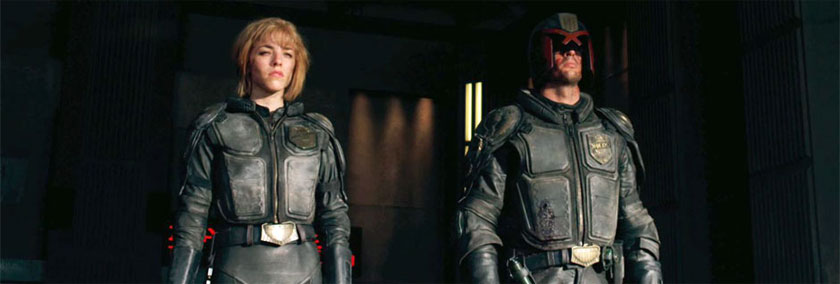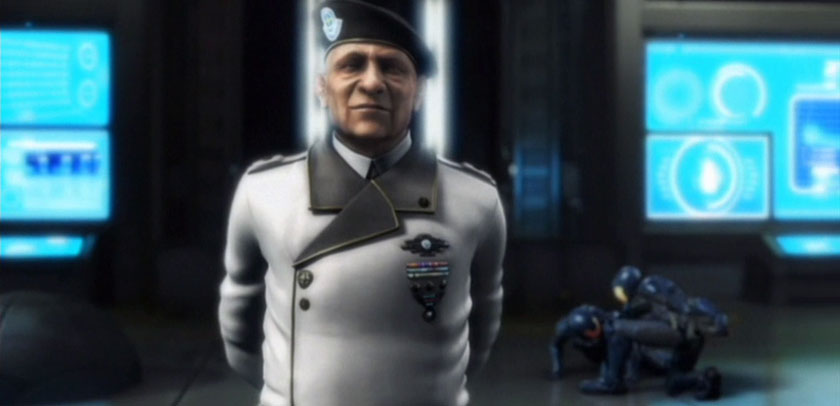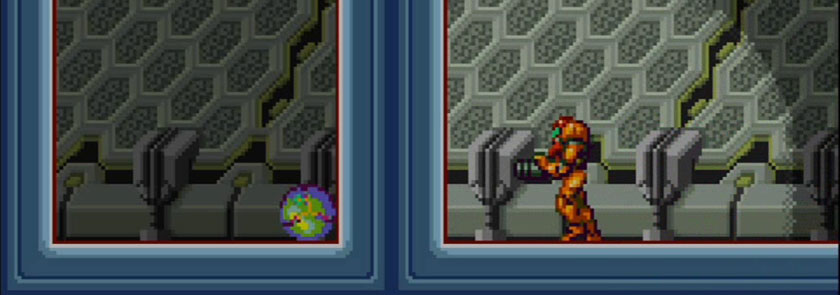Considering Samus Aran

Today is the release of Metroid: Dread, the “fifth” entry in the “main” Metroid narrative. More specifically, it is the most recent canonical release beginning with the progenitor Metroid on the Nintendo Entertainment System, followed by Metroid II: The Return of Samus on GameBoy, which was then succeeded by Super Metroid on the Super Nintendo, and then continued with Metroid: Fusion on the GameBoy Advance. If there is a specific storyline that has been running through the entire franchise, then these are the games considered to be the “main” ones.
Nintendo has recently announced the cast for the upcoming Super Mario Bros. film adaptation, and in response a friend of mine asked me who I’d wish-cast into the role of Samus Aran should she receive a film of her own. It is a question I answer begrudgingly, for I’d prefer there be no film adaptation of Metroid at all. It is not a series whose traits work well with the motion picture medium, grounded too much in an isolated atmosphere of exploration and mystery. From its inception to its modern interpretations, the best entries are those where the plot is minimal and the story is developed through the experience of the player.
It was days later that I stumbled upon comments on some blogs and forums that brought up the much maligned Metroid: Other M and the faults with its writing. Reading and responding to such comments led me to a realization: the greatest problem with adapting Samus Aran to screen is the same as whenever series co-creator Yoshio Sakamoto insists on giving her a voice; Samus Aran is not a character, and the franchise is at its best when the story is not about her.
It may sound controversial to openly declare Samus to not be a character. One term that may be more precise to her role is that she is a cipher or conduit for the player, an avatar to embody for the sake of exploring an environment and completing a mission. However, even from a narrative perspective, Samus Aran is a person that does not grow. She is who she is and she will not change. When I claim Aran is not a character, it is largely in her purpose within the medium in which she is created. However, if we’re speaking in terms of narrative, then we need to perhaps step away from our standard ways of considering a character.

The best comparison that can be made is with the film Dredd, where the titular character is central to the plot but not necessarily the focus. He is Judge Dredd, and the events that have made him who he is are in the past. There is no longer any testing his conviction or willpower. He firmly believes in his sense of justice, and the only conflict is in punishing that which he deems criminal or unjust.
Any philosophical conflict or character growth is thus left to those around Dredd. Be it the rookie experiencing her first mission as a Judge, the plight of the criminals now facing off against a powerful force, or other corrupt Judges that would betray the code that Dredd abides by, it is through their lives and decisions that all thematic and philosophical conflicts are explored. Dredd, on the other hand, simply is.
It is for this reason that I feel so many fans have responded strongly to the Prime extension of the Metroid franchise as opposed to Sakamoto’s efforts to expand it with Fusion and Other M. In the Retro Studios developed series, Samus is never given dialogue. All of her personality is expressed through body language, and the character conveyed is one of experience, caution, and quick thinking. If you had to describe her in one word, “professional” might be the most apt. Yet the stories the player explores within these games are not her own. Instead, the player through Samus begins to unravel the mysteries of planets such as Talon and Aether and the tragedies buried within their ruins. The conflict arises through uncovering the logs of the Space Pirates, the Galactic Federation, the Chozo, and the Luminoth.
What the Prime games succeeded in doing was developing the world in which Samus dwells. This allows the player to effectively pilot Samus through this expansive galaxy, learning of the different alien races throughout and witnessing how great intergalactic kingdoms and empires are often brought down through corruption, be it physical manifestation or ideological.

In comparison, the galaxy as portrayed by Metroid: Fusion and Metroid: Other M is boring and simple. The only race dwelling among the stars apart from humans are the Space Pirates and the Chozo, the latter of which had fled the galaxy a long time ago. Whereas the Space Pirates had once built the Mother Brain themselves, Sakamoto had retconned through manga that the Mother Brain was an invention of the Chozo gone wild, controlling the minds of the otherwise unintelligent Zebesian natives. This is a far cry from the intelligent, mechanically-minded Space Pirates of the Prime games that are driven by a hunger towards technological military might. Simultaneously, races such as the Luminoth or the other bounty hunters found in Prime 3: Corruption or Prime: Hunters serve no place in Sakamoto’s interpretation of the game setting.
The Galactic Federation is given no better treatment, as they are effectively as two-dimensional as the greedy Weyland-Yutani of the Aliens franchise that served as series inspiration. While it was originally the isolation and parasitic nature of the Hollywood terror that informed the design and direction of Metroid on the original Nintendo, it would seem that Sakamoto would later draw his greatest inspiration from the generically greedy and ethically bankrupt authority whose sole interest is in controlling and weaponizing the most dangerous life form discovered in the galaxy. While I can hardly say the Galactic Federation in the Prime branch of games is thoroughly developed, it ironically feels less generic by having no remarkable traits whatsoever. It’s enough of a blank slate that we’re instead able to witness its members develop the setting through logs and conversation, such as one soldier declaring Samus Aran to be a mythological figure while another admires and looks up to her. In other words, the Galactic Federation is defined more by the individuals within it rather than sweeping a broad brush to paint over it.
Lastly, we come to Samus Aran herself. Sakamoto’s attempts to develop Samus often backfired, either contradicting the vague-yet-firm impression players had developed of her over the years, or bringing certain traits so far to the forefront that it did her a disservice. While players in the 80’s were stunned to discover Samus’ identity as a woman upon finishing Metroid, there were just as many – if not more – players, such as myself, that always knew her as a woman when we picked up Super Metroid for the first time. It was accepted as fact, and did not make her any different from characters such as Mega Man, Mario, or the Belmonts. She was beloved because of her prowess as a warrior, and for the attachment we developed in controlling her. Our successes were her successes, and vice versa.
To immediately bring her gender to the forefront in Fusion by highlighting her CO’s habit of addressing her as “Lady” means to now firmly establish her womanhood as a defining aspect to her identity. This is not necessarily a problem depending on how it is handled. Does the game try to say something about women facing greater hardship due to being perceived for their sex and not their actions and accomplishments in the military? Well, no, it doesn’t, really. Similarly, while there is a running theme of “motherhood” in Other: M, it is portrayed with all the finesse of a middle-aged man that has no concept of what it means to be a mother.

The closest you actually get in Fusion to some manner of character depth to force Samus to question whether she is really human or some sort of weapon. The question is prompted by the heartless SA-X clone of her hell bent on destroying everything in sight. It has more to do with Samus’ identity as a human than it does as a woman, which begs the question of why attach a nickname such as “Lady” to her. Or, more specifically, did the developer think bringing her womanhood forward was enough to develop her as a character? Much like her CO presumably addressed her based on her sex rather than her accomplishments or personality, the player is now thinking of Samus first by her gender rather than her prowess as a warrior.
It is this emphasis on the “Lady” nickname that Other M further leans on and unfortunately stumbles over. With her nickname emphasizing her status as the lone woman among a group of men, she is then placed into a position of obedience and subservience under a male commander despite being an independent bounty hunter. She is then subject to emotional anxiety despite being a proven, battle hardened warrior – particularly in terms of fighting a beast that she’s defeated several times by that point in continuity.
In other words, all of Yoshio Sakamoto’s efforts to “develop” Samus as a character instead dismissed or contradicted the impression players had developed of Samus being strong, decisive, and independent. Regardless of how many missions she herself had conducted alone, each of Sakamoto’s efforts to give her a voice instead reduced or violated those traits that players had been able to project onto her.
I am also aware that I, as a male, could be stumbling all over this topic myself and doing it a disservice.
Let us return to the notion of a Metroid film and why the Prime series feels like a far more worthy successor on a narrative scale to Super Metroid: there’s no need to try and “develop” Samus, because she has already developed into a professional, experienced, and independent bounty hunter. She’s an adventurer, and her role is to help eliminate the corruption on ruined planets that are in distress.
If you were to do a Metroid film, then your best bet would be to tell a story where Samus is not central to its narrative. Perhaps explore the final days of the Chozo, before they had fled the galaxy. If you wish for an origin to Samus, then have her as a character, but not the protagonist. Or, perhaps, have her take a role such as Judge Dredd, working with a younger, inexperienced bounty hunter or Federation soldier that has found themselves in over their head. Be careful, concise, and intentional with her dialogue. Do not try and give her an abundance in some effort to “develop” or “characterize” her. Let her actions speak volumes and her words be as precise as her aim.
At the end of the day, the best Metroid games and stories are not about Samus Aran. She serves a key role in those narratives, yes, but she is not a character to be challenged philosophically or ideologically. She is who she is, forged by the training of the Chozo and the armor she wears. There is no more character growth for her, and therefore we use her as the vehicle to explore the stories of worlds needing salvation or cleansing.
I am curious to see which direction Metroid: Dread shall take.


